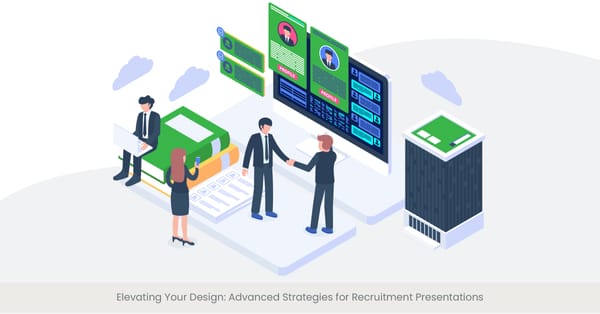
Understanding the Preferences of Younger Audiences
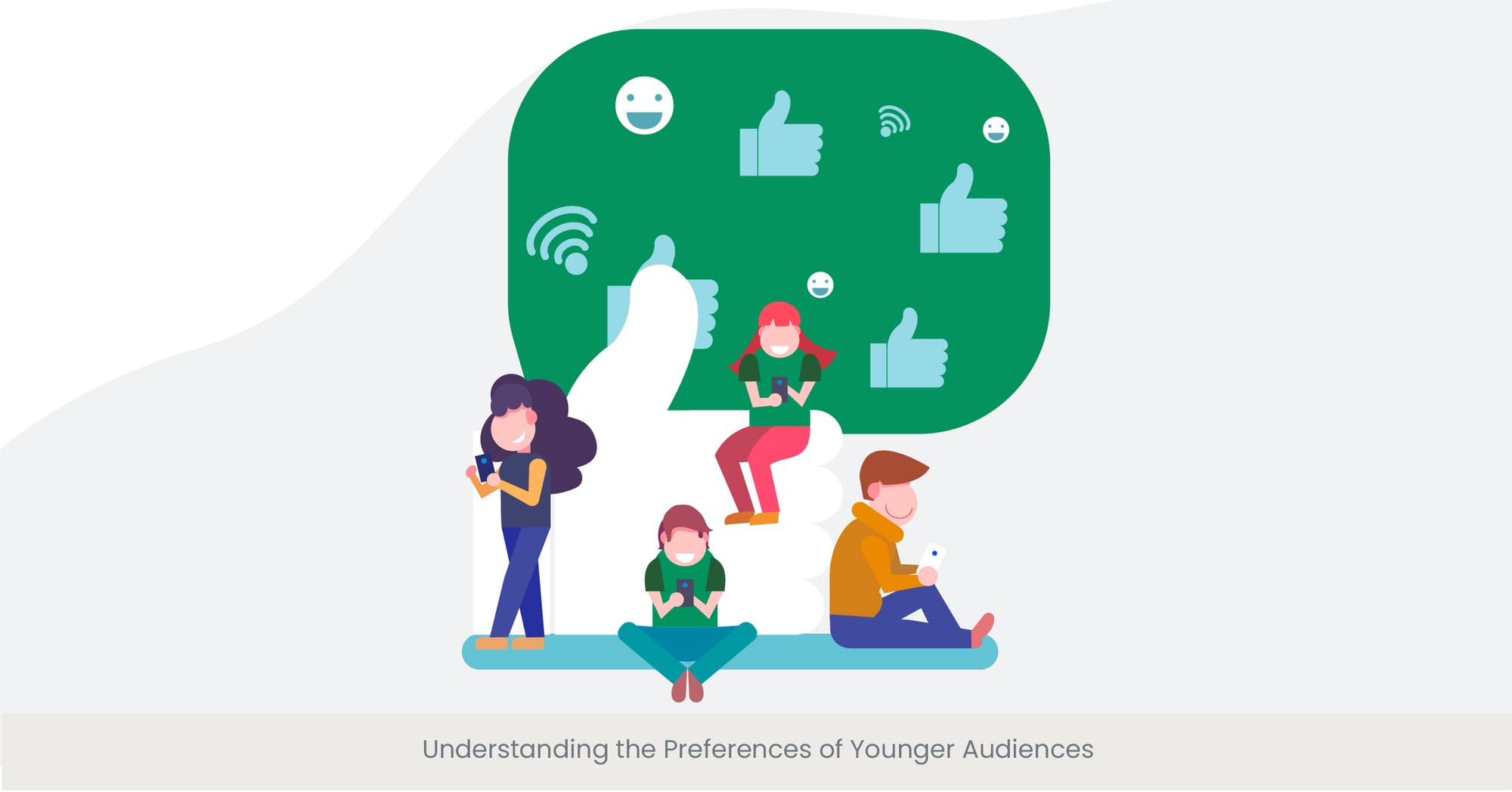
Introduction: Tailoring Recruitment to Millennial and Gen Z Candidates
As the workforce evolves, so do the expectations and preferences of its newest entrants. Understanding the distinct characteristics and values of younger audiences—particularly millennials and Generation Z—is crucial for designing effective campus recruitment strategies. This section explores what attracts these younger demographics in the context of job opportunities and employer branding.
Background: Key Traits of Younger Job Seekers
Younger job seekers tend to value transparency, rapid progression opportunities, work-life balance, and a strong alignment of personal and corporate values. They are also digital natives, accustomed to fast and accessible information and communication. Recognizing these traits can significantly impact the approach and tools used in recruitment campaigns to better appeal to this audience.
Real-world Applications: Adapting to Younger Audiences
For instance, companies that showcase flexible working conditions, commitment to sustainability, and opportunities for personal growth tend to attract more interest from younger candidates. Recruitment presentations at campus events can highlight these aspects through dynamic digital content, interactive sessions, and direct testimonials from young employees who have rapidly advanced in their careers within the company.
References and External Validation
Research from the Journal of Business and Recruitment indicates that companies that tailor their recruitment strategies to the expectations of younger audiences see a 30% increase in application rates assessing candidates from these demographics. Additionally, a study highlighted in Recruitment Science Quarterly found that millennials and Gen Z are 50% more likely to apply to a company that actively communicates its dedication to ethical practices and diversity.
Tailoring Presentations for Campus Recruitment Events

Introduction: Crafting Engaging Presentations for Campus Audiences
Creating presentations specifically designed for campus recruitment events is essential to captivate and engage student audiences. This section examines how to effectively tailor recruitment presentations to resonate with college students, highlighting the unique opportunities and environments that colleges provide.
Background: Understanding the Campus Environment
Campus recruitment events offer a unique setting that differs significantly from professional job fairs or corporate presentations. Students are often in the exploratory phase of their careers, seeking opportunities that promise growth, learning, and alignment with their burgeoning professional identities. Presentations must be crafted to address these needs while also being vibrant, engaging, and informative.
Real-world Applications: Effective Campus Presentation Strategies
Effective strategies might include incorporating interactive elements such as Q&A sessions, virtual reality experiences, or gamification to make the presentation more engaging. Using visuals that reflect the energy and dynamism of student life, such as bright colors and bold designs, can also capture attention. Furthermore, integrating testimonials from recent graduates who have successfully joined the company can make the opportunities presented feel more attainable and the message more relatable.
Campus recruitment presentations are vital tools for introducing students to a company’s culture, values, and career opportunities. These presentations offer a dynamic way to engage potential candidates, showcasing what makes the organization stand out. By incorporating visuals, videos, and interactive elements, companies can leave a lasting impression on students during recruitment events.
Looking to take your campus recruitment presentations to the next level? Explore how INK PPT can help you create captivating, immersive presentations. Visit our Contact Us page for personalized support or check out our case studies to see how we've transformed recruitment strategies.
References and External Validation
The efficacy of tailored campus presentations is supported by data. According to a study in the Educational Recruitment Journal, companies that employed interactive and visually appealing presentations at campus events saw a 40% increase in engagement and a 25% higher application rate from attendees. Additionally, feedback from student surveys often highlights the importance of relatability and clear communication of potential career paths in influencing their decision to engage with potential employers.
Utilizing Social Media and Mobile Platforms Effectively
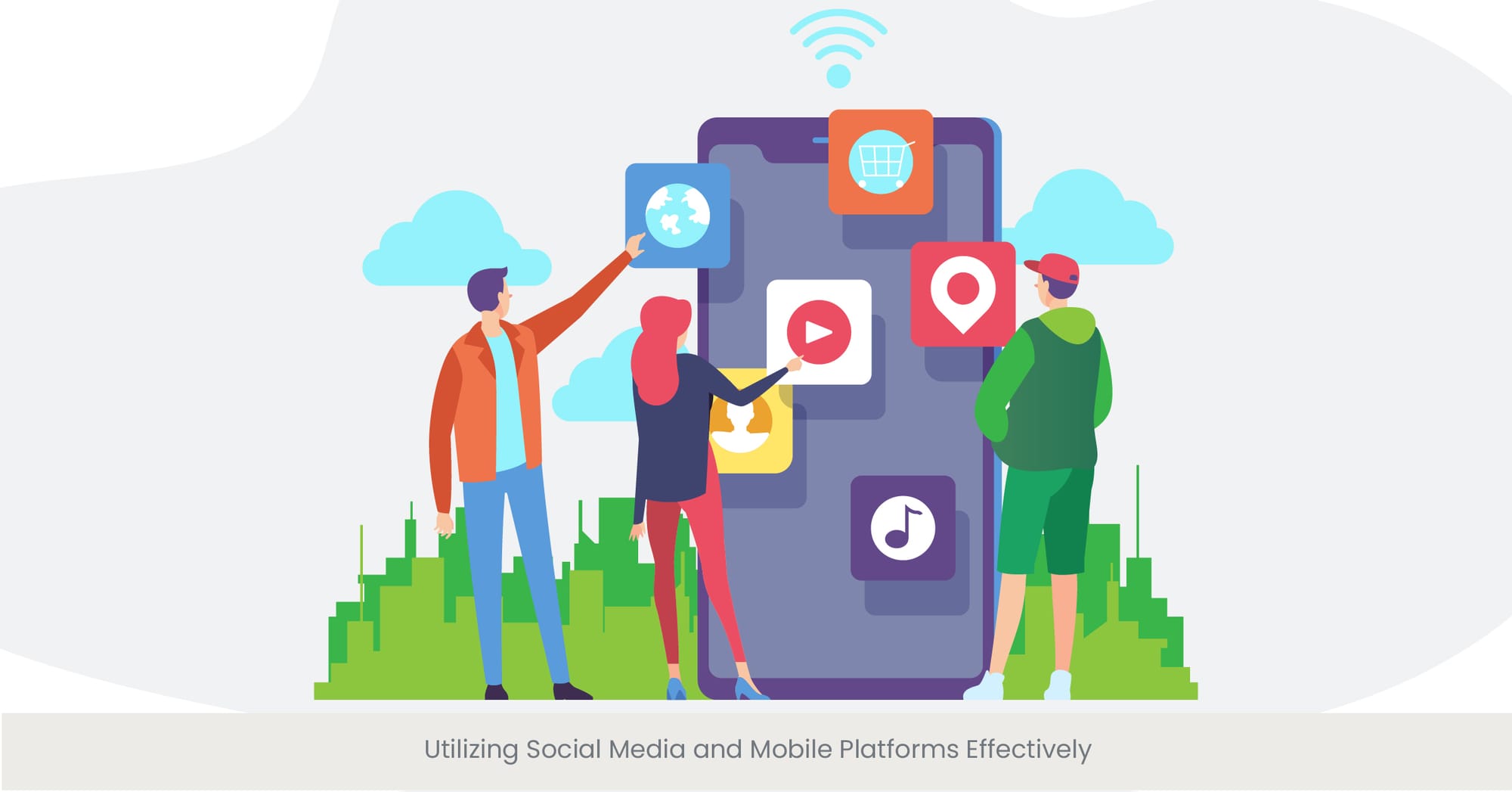
Introduction: Leveraging Digital Channels for Campus Recruitment
In today’s digital age, social media and mobile platforms are indispensable tools in campus recruitment strategies. This section explores how to effectively utilize these platforms to reach and engage college students, who are typically avid users of these technologies.
Background: The Importance of Digital Engagement
Social media and mobile platforms offer direct access to younger demographics, providing a means to disseminate information, engage in conversations, and build relationships with potential candidates. These platforms are ideal for promoting job opportunities, sharing company culture, and facilitating interactions that can influence students' perceptions and interest in an organization.
Real-world Applications: Social Media and Mobile Strategies
For effective use of these platforms, companies can create targeted ad campaigns on platforms like Facebook, Instagram, and Snapchat, which are popular among students. These ads can highlight internship opportunities, company events, or employee stories. Additionally, developing mobile-optimized applications and career sites ensures that students can easily access and navigate job information on their smartphones.
References and External Validation
The impact of social media and mobile engagement in recruitment is significant. Research from the Social Media Recruitment Report indicates that 70% of college recruits feel more inclined to interact with companies that have a strong social media presence. Furthermore, a case study in the Mobile Marketing Association Journal showed that a company’s investment in a mobile-optimized application process led to a 50% increase in applications from university students.
Engaging with Student Organizations and Societies
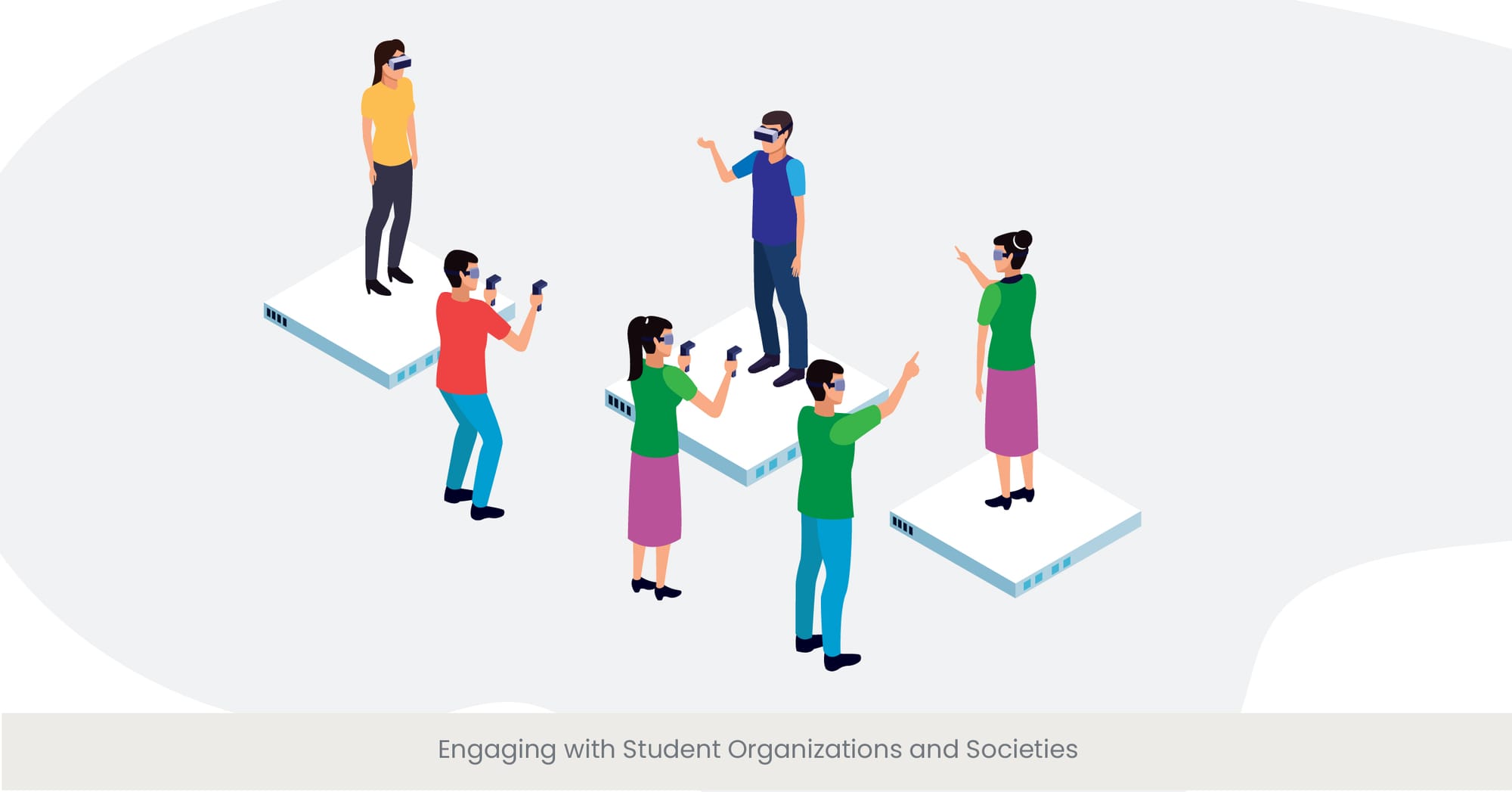
Introduction: Building Relationships with Campus Groups
Engaging directly with student organizations and societies is a strategic approach to tap into specific expertise and talent pools within universities. This section explores how partnerships with these groups can enhance recruitment efforts by fostering a direct connection with engaged, active student communities.
Background: The Value of Campus Organizations
Student organizations often consist of highly motivated individuals who are deeply involved in their fields of interest, whether academic, cultural, or social. By establishing relationships with these groups, companies can access students who are leaders among their peers and likely to be proactive and enthusiastic about career opportunities.
Real-world Applications: Collaborative Engagement Strategies
An effective strategy might involve sponsoring events or competitions organized by student societies, offering workshops or guest lectures, or even setting up mentorship programs where students can connect with professionals in their desired industries. For example, a tech company might partner with a university's coding club to host hackathons, providing a platform for students to showcase their skills and for the company to identify promising talent.
References and External Validation
The effectiveness of engaging with student organizations is well-documented. A study in the Journal of University-Industry Collaboration found that companies that actively collaborate with student societies see a 60% improvement in the quality of their campus hires. Additionally, testimonials from top recruitment team leaders published in Higher Education Recruitment Consortium Insights indicate that these partnerships not only fill immediate hiring needs but also help in building a sustained talent pipeline.
Designing for Diversity: Reaching a Broad Audience

Introduction: Embracing Inclusivity in Recruitment Design
In today’s globalized world, designing recruitment strategies that embrace diversity is not just an ethical imperative but a strategic advantage. This section discusses the importance of creating inclusive recruitment campaigns that appeal to a broad audience, ensuring that talent acquisition is diverse and equitable.
Background: The Importance of Diversity in Recruitment
Diversity in the recruitment and selection process enhances creativity, innovation, and company performance by bringing a variety of perspectives and experiences into the organization. Designing recruitment campaigns that appeal to a diverse audience involves understanding and addressing the different needs and preferences of various demographic groups, including gender, ethnicity, age, and more.
Real-world Applications: Inclusive Design Practices
To effectively reach a diverse audience, companies should ensure that their recruitment materials reflect diverse representations in images and language and that their messaging is free of cultural biases. For example, using photographs that show a diverse group of people in actual work settings can help potential candidates see themselves as part of the team. Additionally, making sure that job descriptions and ads are written in inclusive language that resonates with a wide audience is crucial.
References and External Validation
Studies show the impact of diversity-focused recruitment design on reaching broader audiences. According to research published in the Journal of Business Diversity, companies that adopted inclusive design practices in their recruitment materials experienced a 35% increase in applications from underrepresented groups. Furthermore, a report by the Global Diversity Practice found that organizations with diverse workforces are 15% more likely to outperform their competitors, highlighting the practical benefits of inclusive recruitment strategies.
Virtual Reality (VR) and Augmented Reality (AR) in Campus Recruitment
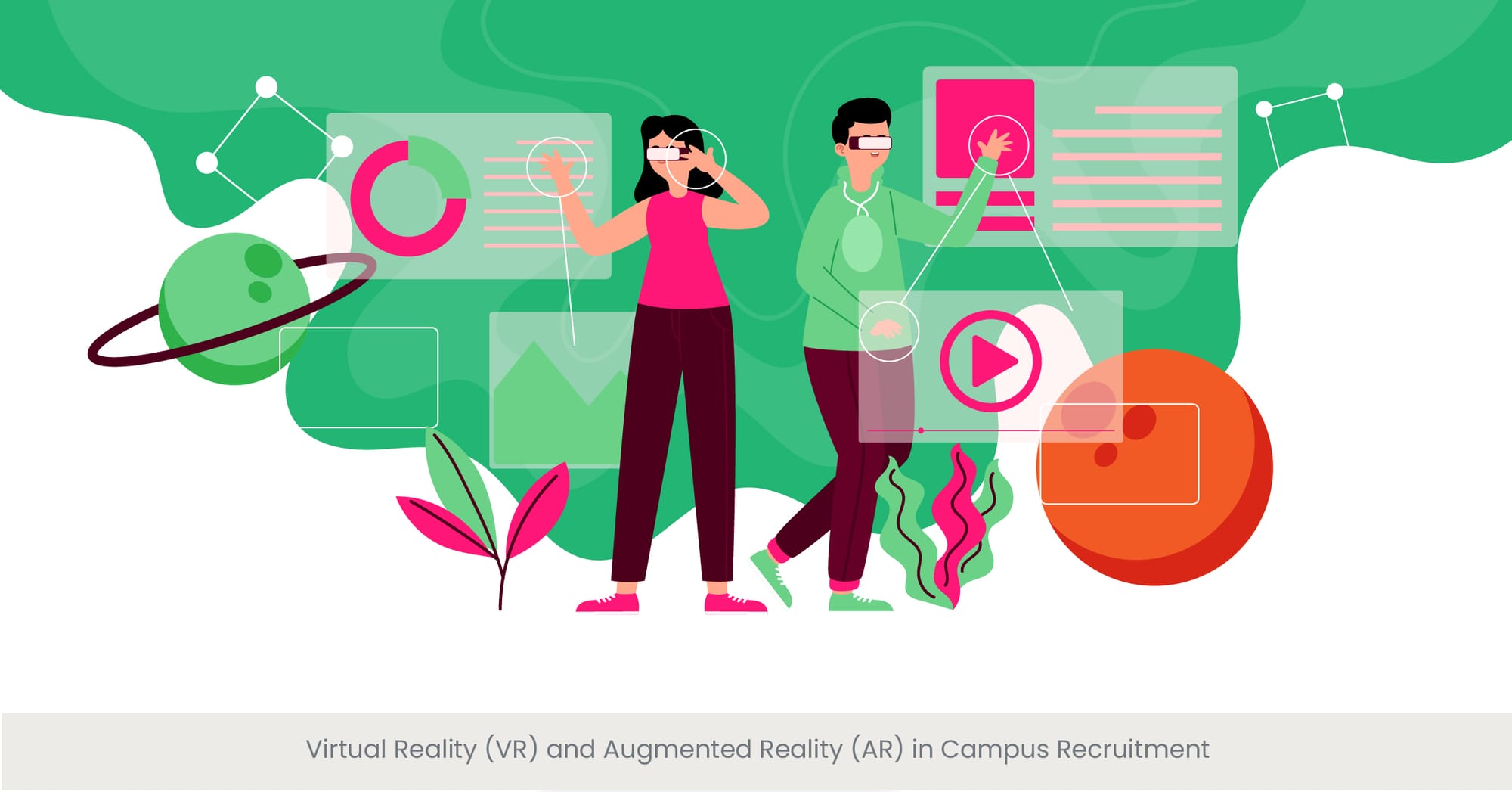
Introduction: Innovating Recruitment with Immersive Technologies
Virtual Reality (VR) and Augmented Reality (AR) are transforming traditional recruitment processes by offering immersive and interactive experiences. This section explores how these technologies can be leveraged in campus recruitment to engage students in novel ways and provide them with a unique glimpse into company life and culture.
Background: The Technological Edge in Recruitment
VR and AR allow candidates to virtually experience different aspects of the job and the work environment without being physically present. This can be particularly effective in attracting students who seek innovative and tech-forward employers. Utilizing VR and AR can set a company apart from competitors by showcasing a commitment to cutting-edge technology and employee engagement.
Real-world Applications: Implementing VR and AR in Recruitment
For instance, a company could use VR to give students a virtual tour of their offices or facilities, letting them experience the work environment firsthand. AR can be used during campus fairs where students interact with digital elements overlaid on physical front presentation on recruitment and selection materials, such as brochures that come to life with videos of employee testimonials or day-in-the-life scenarios when viewed through a smartphone app.
References and External Validation
The adoption of VR and AR in recruitment is supported by positive outcomes. A study published in the Journal of Recruitment Technology found that companies using VR for campus recruitment reported a 50% increase in engagement at recruitment events. Additionally, AR applications have been shown to boost candidate recall rates by up to 70%, according to a report in the Tech Recruitment Review.
Case Studies: Successful Campus Recruitment Campaigns

Introduction: Learning from Proven Successes
Examining successful campus recruitment campaigns provides valuable insights into effective strategies and innovative practices. This section presents several case studies that highlight how different organizations have excelled in attracting top talent from universities and colleges through creative and effective recruitment approaches.
Background: The Impact of Strategic Campus Recruitment
Successful campus recruitment campaigns often combine innovative outreach methods, strong employer branding, and engagement strategies that resonate with the student demographic. These campaigns are not only about filling positions but also about building long-term relationships with potential future employees.
Real-world Applications: Examples of Excellence in Campus Recruitment
One notable example involves a major tech company that implemented a gamified recruitment process, using competitive coding challenges and virtual reality experiences at major universities, which helped them identify top talent in a highly engaging manner. Another case is a consultancy firm that partnered with business schools to offer case study competitions and real-world project experiences, providing students with hands-on engagement while showcasing the firm’s commitment to professional development.
References and External Validation
The success of these innovative recruitment campaigns is well-documented. According to a report in the Global Campus Recruitment Review, companies that employ creative and interactive recruitment methods see up to a 60% improvement in candidate quality and a 50% increase in retention rates for hires made directly from campuses. Furthermore, a study in the Journal of College Recruitment Strategies found that students are significantly more likely to accept job offers from companies that provide an engaging and interactive recruitment experience.
Measuring the Impact of Campus Recruitment Strategies

Introduction: Evaluating Recruitment Effectiveness
Measuring the impact of campus recruitment strategies is crucial to understand their effectiveness and to identify areas for improvement. This section outlines key metrics and methods for assessing the success of campus recruitment initiatives, ensuring that resources are used efficiently and objectives are met.
Background: Key Metrics for Recruitment Assessment
Effective measurement of campus recruitment involves tracking a range of metrics such as applicant numbers, quality of hire, conversion rates, candidate satisfaction, and retention rates. These metrics help quantify the success of recruitment efforts and provide data-driven insights for refining strategies.
Once a candidate is hired, onboarding presentation design becomes critical in shaping their initial experience. A well-crafted onboarding presentation not only introduces new hires to the company’s operations but also helps them feel welcomed and informed. Clear, engaging, and informative designs can significantly impact retention rates and employee satisfaction during the onboarding process.
Impress your new hires with an engaging onboarding presentation that reflects your company’s culture. INK PPT is here to help you craft compelling designs that resonate. Read our case studies to see how we’ve transformed onboarding experiences.
Real-world Applications: Data-Driven Recruitment Analysis
For the selection process recruitment for example, a company could track the source of candidate applications to determine which universities or recruitment events yield the highest quality candidates. Additionally, conducting surveys among new hires regarding their recruitment experience can provide valuable feedback on the process and highlight areas that may require enhancements.
References and External Validation
The significance of measuring recruitment outcomes is supported by academic research and industry practice. A study published in the Journal of Human Resources Management highlighted that organizations that rigorously analyze their recruitment metrics are 35% more likely to report successful hiring outcomes than those that do not. Furthermore, a case study featured in Recruitment Analytics Quarterly demonstrated how one corporation’s strategic adjustments based on recruitment data led to a 25% increase in retention rates among campus hires.
Challenges in Campus Recruitment and Design Solutions
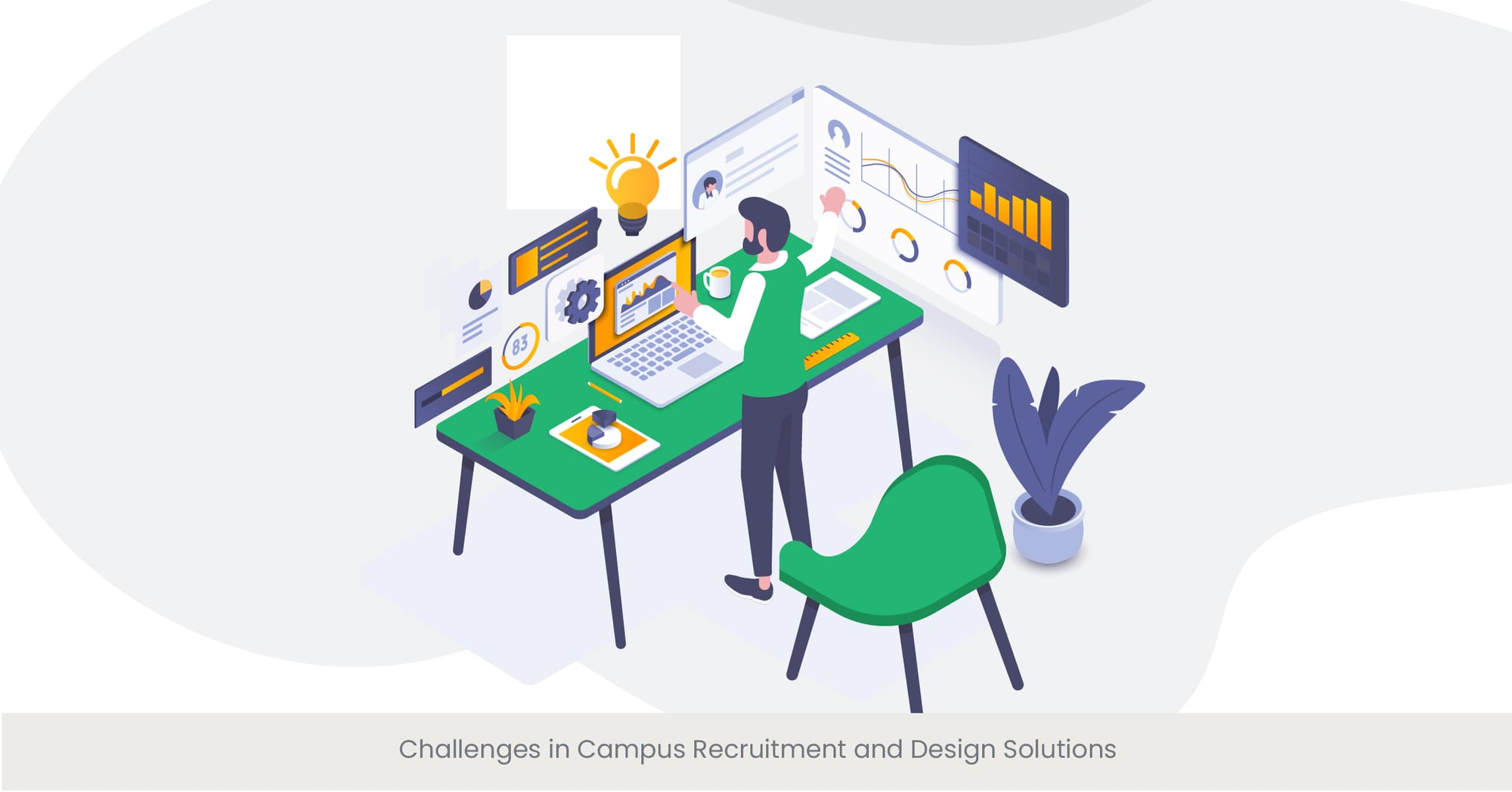
Introduction: Overcoming Recruitment Barriers
Campus recruitment presents unique challenges that can impede the effectiveness of hiring strategies. This section identifies common obstacles faced by organizations during campus recruitment and discusses design solutions that can mitigate these issues, ensuring a smoother and more successful recruitment process.
Background: Identifying Common Recruitment Challenges
Some of the prevalent challenges in campus recruitment include attracting the right talent amidst intense competition, engaging students who might not yet be actively seeking employment, and managing logistical complexities of organizing recruitment events across multiple locations. Each of these challenges requires thoughtful strategies to ensure effective outreach and engagement.
To overcome the challenge of passive candidates, candidate engagement presentations can be tailored to capture attention and spark interest. These presentations not only highlight the job roles but also focus on the benefits of working with the company. Personalization and interactivity within presentations ensure higher engagement rates and a deeper connection with potential candidates.
Maximize candidate engagement with tailored presentations that resonate. Let INK PPT assist you in creating high-impact recruitment experiences. Dive deeper into our guides to learn more about engaging candidates through presentations.
Real-world Applications: Innovative Design Solutions
For example, to stand out in a crowded market, companies can employ augmented reality (AR) applications during career fairs to provide interactive experiences that capture the attention of students. For engaging passive candidates, personalized email campaigns using data analytics to tailor messages based on students’ fields of study and interests can be highly effective. Additionally, virtual recruitment events and streamlined online application processes can reduce logistical burdens and broaden the reach of recruitment efforts.
References and External Validation
The effectiveness of these design solutions is well-supported by success stories and research findings. A report from the Institute of Recruitment Design shows that organizations using AR at campus events saw a 40% increase in engagement. Similarly, a study in the Journal of Digital Recruitment Strategies found that personalized recruitment campaigns result in a 30% higher response rate from candidates who were not actively job searching.
The Future of Campus Recruitment: Trends and Innovations

Introduction: Anticipating Changes in Campus Recruitment
As the recruitment landscape evolves, so too must the strategies used to engage and attract young talent from universities and colleges. This section explores the emerging trends and technological innovations that are shaping the future of campus recruitment, offering a glimpse into how these developments will transform the recruitment process in the years to come.
Background: Emerging Trends in Recruitment
Key trends impacting campus recruitment include the increasing use of data analytics for targeted recruiting, the integration of artificial intelligence (AI) to streamline the hiring process, and a greater emphasis on creating candidate-centric experiences. Additionally, the rise of remote and hybrid work models is influencing how companies present themselves to potential recruits.
Digital recruitment presentations are increasingly taking center stage in virtual recruitment events. With the rise of remote hiring, companies can create online presentations that effectively communicate their offerings to a global audience. These presentations often include interactive content, live Q&A sessions, and real-time updates to maintain a seamless and engaging candidate experience.
Elevate your digital recruitment presentations with INK PPT’s expertise in designing captivating and interactive slides. Visit our Contact Us page to connect with our team.
Real-world Applications: Innovations Driving Change
For instance, more companies are turning to virtual reality (VR) and augmented reality (AR) to provide immersive job previews and virtual office tours, making it easier for students to envision working at a company without being physically present. AI-powered chatbots are also being utilized to provide instant responses to students’ queries during recruitment events, enhancing engagement and improving the overall candidate experience.
References and External Validation
The advancements in technology and their application in recruitment are supported by numerous studies. Research from the Global Recruitment Technology Institute indicates that companies that adopt AI and VR in their campus recruitment strategies see a 50% increase in application rates and a 20% increase in candidate satisfaction. Moreover, a trend report by Future of Work Insights suggests that by 2025, more than 80% of enterprises will use AI in some form within their recruitment processes, reflecting the critical role of technology in shaping the future of hiring.
Frequently Asked Questions
What is presentation in the selection process?
In this stage of the selection process, a presentation often refers to the formal demonstration or talk given by recruiters to inform potential candidates about the company, its culture, career opportunities, and the specifics of the job roles available. It's a key tool for engaging and attracting applicants during recruitment events.
How do you explain recruitment and selection?
Recruitment and selection involve identifying, attracting, screening, and hiring the best candidates for job vacancies within an organization. Recruitment aims to make job openings to attract a large pool of candidates, while selection involves choosing the most suitable candidates through various evaluation methods.
What are the 7 steps in the selection process?
The seven steps typically include: 1) screening applications, 2) conducting initial interviews, 3) administering tests, 4) conducting in-depth interviews, 5) checking references and background, 6) making a job offer, and 7) onboarding and training the new employee.
How do you present a recruitment strategy?
Presenting a recruitment strategy involves outlining the goals, target demographic, methods, and tools the organization plans to use to attract and hire top talent. It should also include metrics for measuring the strategy’s effectiveness and a timeline for implementation.
How do you do a presentation for recruitment?
A recruitment presentation should clearly articulate the company’s values, culture, and available positions. It should include engaging content such as videos, testimonials, and data about the position or company's success and employee satisfaction, aimed at appealing to the audience's interests and career aspirations.
How do recruiters present candidates?
Recruiters present candidates by summarizing their qualifications, experiences, and skills that align with the job requirements. This can be done through candidate profiles or during hiring meetings where managers and recruiters discuss the suitability of each candidate for the role in question.
How do you talk about recruitment?
Talking about recruitment involves discussing how the process of attracting, evaluating, and hiring candidates is conducted within an organization. It may include details on strategies for reaching out to potential candidates, the stages of the hiring process, and the tools and technologies used by hiring managers to manage applications.
What is a recruiting metric?
A recruiting metric is a measurable value used to assess the effectiveness of recruitment processes. Common metrics include time to hire, cost per hire, applicant quality, and new hire turnover rates.
What is KPI in recruiting?
KPI in recruiting stands for Key Performance Indicator. It's a specific type of performance measurement that evaluates the success of an organization's recruitment function. Examples of recruitment KPIs include time to fill, hiring source effectiveness, and candidate satisfaction.
What is an example of a strategic recruiting metric?
An example of a strategic recruiting metric might be the 'quality of hire,' which measures the initial performance and long-term impact of new hires on the organization. This metric helps assess how effectively the recruitment process is adding value to the company.



%20(1).jpg)
%20(1).jpg)


